Upon arrival at Eleftherios Venizelos Airport, travelers are greeted by an imposing replica of a Cycladic figurine, alongside other sculpted female forms of the Early Cycladic period, with slightly swollen bellies or engraved lines above their pubic area, indicating pregnancy. Even hurried onlookers pause to watch the accompanying video, a prelude to the major archaeological exhibition titled “Kykladitisses: Untold Stories of Women in the Cyclades,” organized by the Museum of Cycladic Art in collaboration with the Ministry of Culture and the Ephorate of Antiquities of the Cyclades.
Inside the Museum of Cycladic Art (The Stathatos Mansion), 180 pieces spanning from early prehistory to the 19th century will be displayed across pristine white galleries with soft blue pedestals. The colossal Archaic Kore of Thera (1st quarter of the 6th century BC), a remarkable find from 2000, requires special handling. At almost two meters tall and made of Naxian marble, it is only missing the tip of the nose and the forearm of the right hand, which is resting on the chest. The statue has almond-shaped eyes, sturdy shoulders, a long austere dress, and hair parted into tresses that resemble modern-day dreadlocks.
Other key exhibits include the striking Ladies’ Fresco from Akrotiri, Thera; an Attic black-figure kylix depicting an erotic scene from ancient Thera; a Hellenistic figurine from Serifos provocatively portraying Baubo’s genitals; and a 4th–2nd century BC lamp from Folegandros which bears an erotic scene on its outer surface and inscriptions of names from initiation ceremonies that took place at Chrysospilia inside.
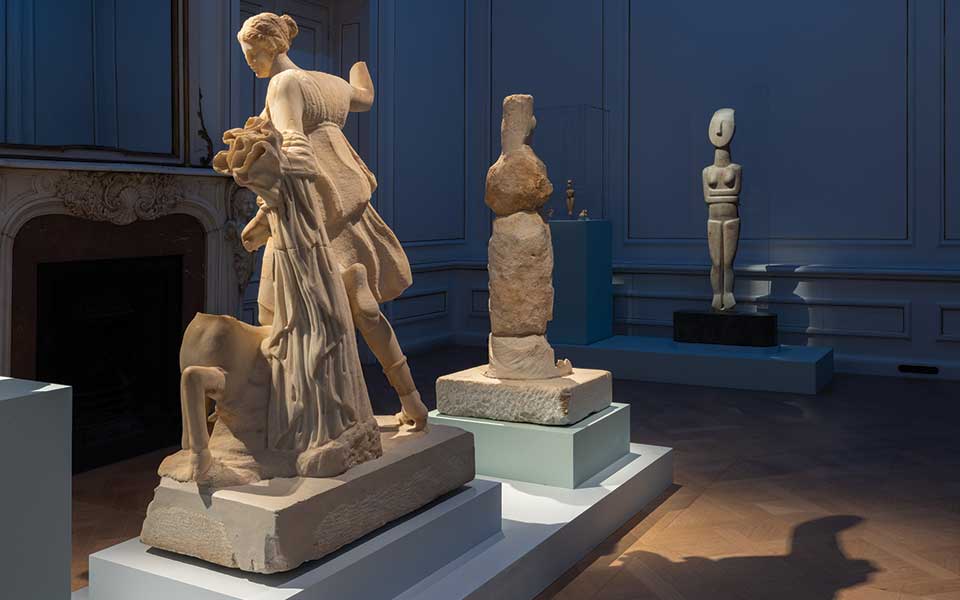
© Paris Tavitian © Museum of Cycladic Art
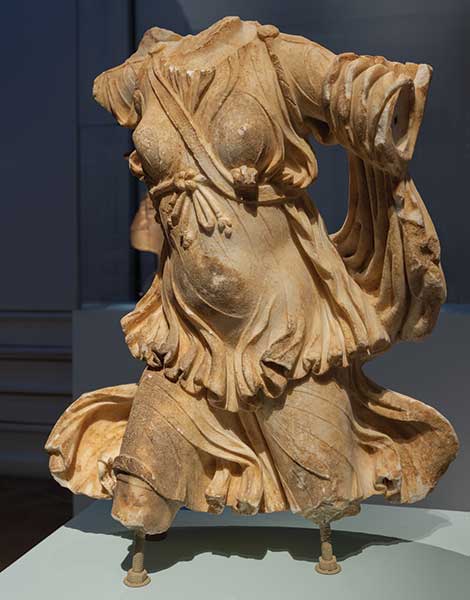
© Paris Tavitian © Museum of Cycladic Art
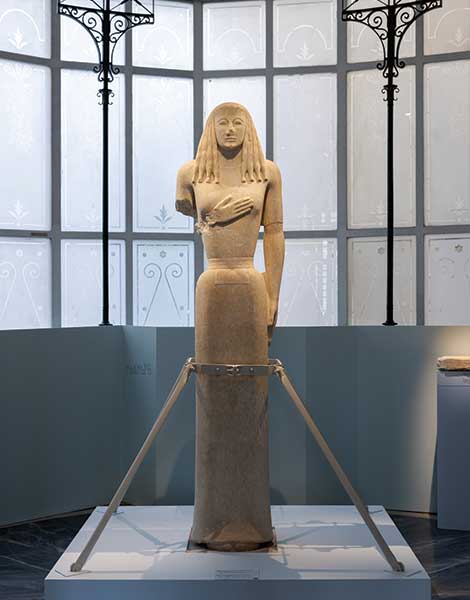
© Paris Tavitian © Museum of Cycladic Art
The “Possessed” Neiko
Mykonos is represented with two stories that reflect the role of women in marriage negotiations: one from the late 4th–early 3rd century BC, and the other from 1690. The exhibition also features the Bleeding Mistress from prehistoric Thera, Saint Anastasia the Pharmakolytria from Byzantine Naxos, the steatopygous Lady from the Saliagos islet north of Antiparos, and the “possessed” Neiko, whose tomb was uncovered in 2018 during the restoration of the Episkopi of Sikinos. Neiko was buried in the basement of an ancient monument. Her bones were broken to fit her body into the confined space, and she was interred with gold objects. Beneath her head, however, archaeologists found sulfur and pitch – evidence of a necrophobic exorcism. This ritual suggests that Neiko, an unfortunate noblewoman, likely suffered from epilepsy, a condition that was poorly understood at the time.
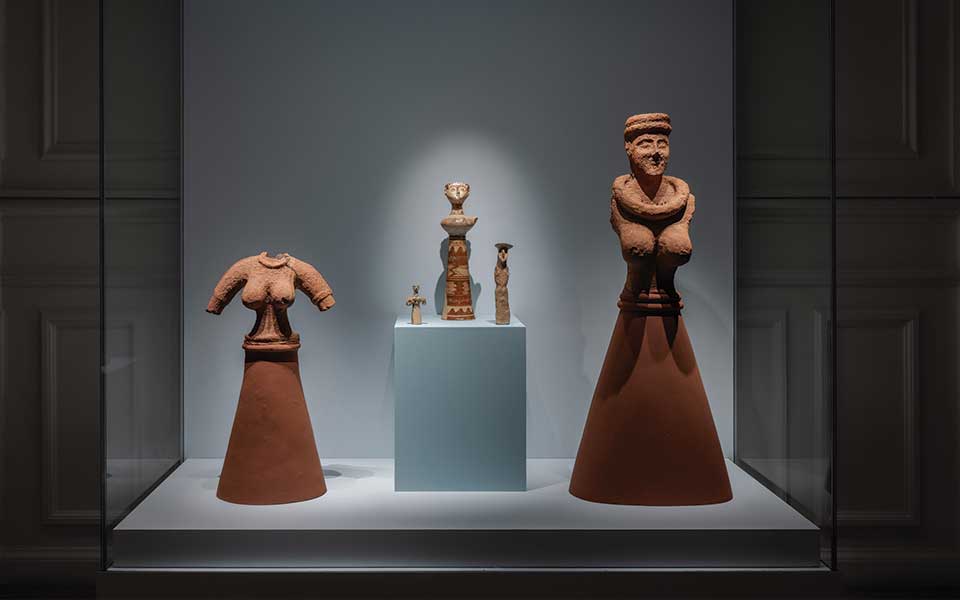
© Paris Tavitian © Museum of Cycladic Art
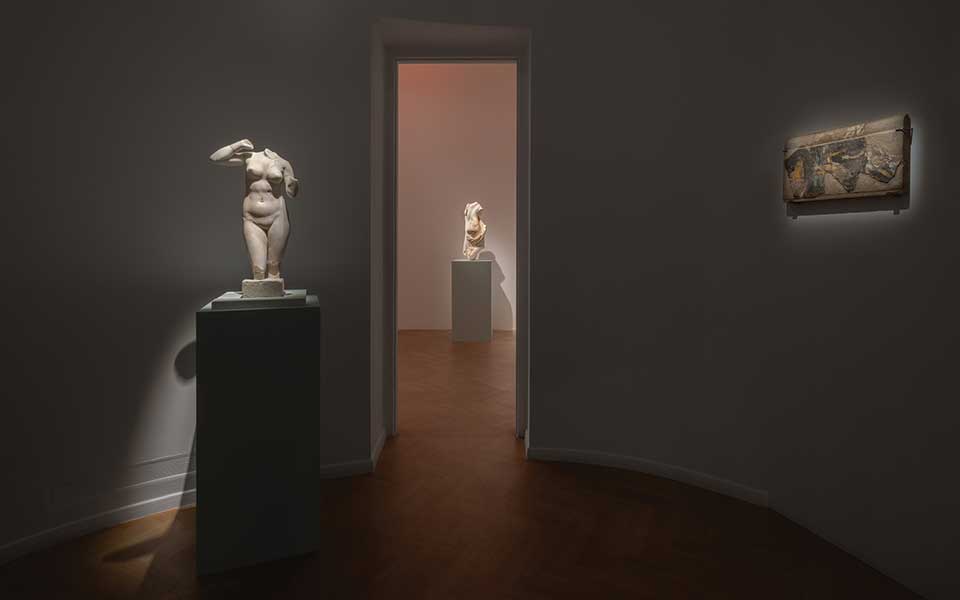
Between Light and Shadow
These are just a few of the stories brought to life in the exhibition “Cycladic Women: Unknown Stories of Women from the Cyclades”, organized in collaboration with the Greek Ministry of Culture and Sports, the Ephorate of Antiquities of the Cyclades, and the Museum of Cycladic Art.
The exhibition includes artifacts from the National Archaeological Museum, the Kanellopoulos Museum, the Epigraphic Museum of Athens, and private collections. “Working on this exhibition has deepened my admiration for women. For millennia, half of humanity lived under unimaginable oppression. Even Christianity, while preaching equality, did little to change this pattern. In fact, women’s status not only failed to improve but often worsened,” says Dr. Dimitris Athanasoulis, director of the Ephorate of Antiquities of the Cyclades and co-curator of the exhibition.
He worked alongside Dr. Panagiotis Iosif, Professor at Radboud University in the Netherlands, and Dr. Ioannis Fappas, Assistant Professor of Prehistoric Archaeology at Aristotle University of Thessaloniki. “The Museum of Cycladic Art, located in the heart of Athens, provides a key platform to showcase Cycladic civilization,” Dr. Athanasoulis continues. “As an Ephorate, we aim to promote the Cyclades in the capital while also supporting the islands. This summer, the exhibition will coincide with the long-anticipated reopening of the Archaeological Museum of Thera, which had been closed for renovations.”
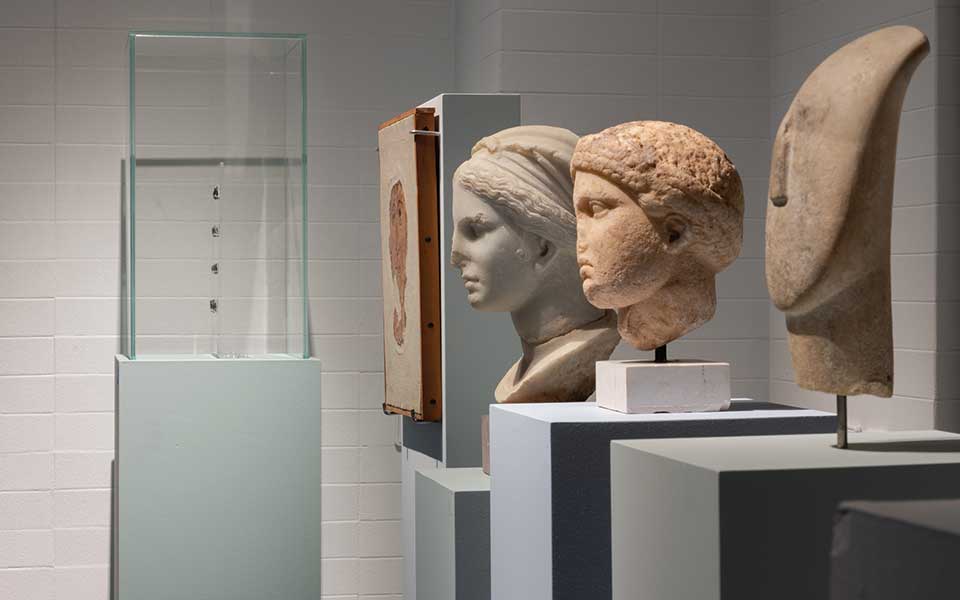
© Paris Tavitian © Museum of Cycladic Art
The Story of Neiko
Neiko’s story resonates deeply with Dr. Athanasoulis. “Her relatives concealed her remains within the masonry of a structure, but at the same time, they honored her with a grand mausoleum. It reflects a schizophrenic attitude toward the same person. I was also moved by the story of Parthenika, a young woman from Santorini who died prematurely. Her sister, Damocleia, erected a monument to her, inscribed with sorrowful words expressing the depth of her grief. Another fascinating narrative is the life of Saint Theoktisti, recorded in a 12th-century manuscript from the National Library of Greece. Abducted by Arab pirates from Lesvos, she escaped when they stopped in Paros to resupply, and led a hermetic life in the church of Katapoliani.”
The Exhibition’s Importance
Panagiotis Iosif, scientific director of the Museum of Cycladic Art and co-curator of the exhibition, discusses its importance. “The exhibition presents history through the eyes of women in the Cyclades. It also includes masterpieces from nearly all the Cycladic islands that are being showcased in Athens for the first time. It explores the roles of women over time and how these roles were shaped by their connection to the Cyclades. Although Cycladic men often defined and circumscribed these roles – whether as mothers, wives, or daughters – they still placed women at the heart of religious and mythological life.
However, they also excluded them from public life, relegating them almost exclusively to household responsibilities. The narrative is perfectly captured by Kadia Sigala, an early-20th-century shipowner from Santorini, who seems to speak on behalf of all her anonymous ancestors, who only left behind small, largely unknown stories.”
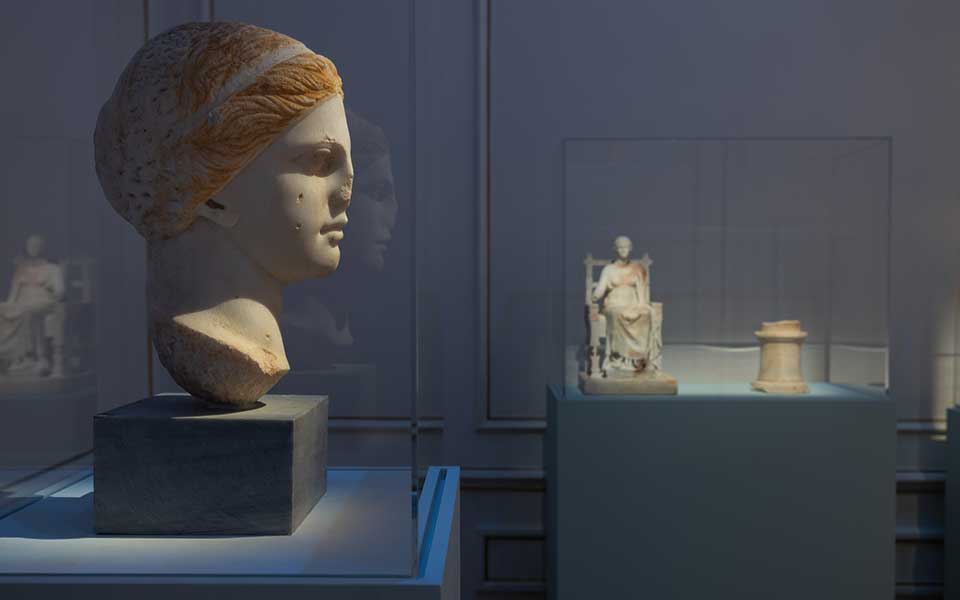
© Paris Tavitian © Museum of Cycladic Art
The Resilience of Cycladic Women
Ioannis Fappas, also a scientific director of the Museum of Cycladic Art and co-curator of the exhibition, reflects on the resilience of Cycladic women: “Their dynamism was shaped by their landscape – arid, rocky, isolated yet connected with other islands. It is a place both enchanting and unique. These women were bold, engaging in economic transactions that benefited their communities and traveling worldwide to find their destiny in the heart of the Archipelago. They tested their relationship with the divine, often becoming ascetics or saints themselves. The sea, ever-present, influenced their lives – both with its dangers and its promise of freedom.”
Documents
A surprising highlight of the exhibition is a set of two letters by Manto Mavrogenous from Mykonos. The first, written in 1825, is addressed to the Legislative Assembly, and the second, in 1841, to King Otto. A fighter both during the Greek Revolution and in times of peace, in the first letter, she offers everything she has, including her fortune, to the revolutionary cause. In the second, she asks to be awarded the Medal of Honor and the Military Dowry Allowance. In a move that highlights the gender divide of her era, Manto advocates for equality, demanding recognition for women’s contributions and rights: “Your Majesty, the Fatherland was not liberated solely by men; Greek women also personally fought the enemies of Faith and Country…” According to Ioannis Fappas, “Equally important in the exhibition is Mavrogenous’ contemporary, the distinguished intellectual from Andros, Evanthia Kairi. Through the writings of these two remarkable women from the Cyclades, we trace major steps toward the emancipation of women in the pre- and post-revolutionary Greek state – a state that, while acknowledging their contribution, fails to honor them as they deserved.”
This article was previously published in Greek at kathimerini.gr












